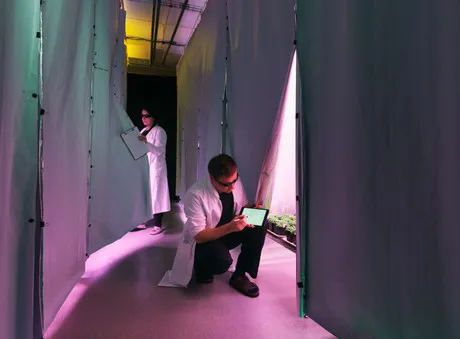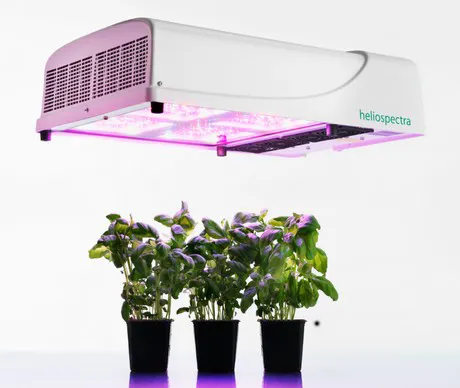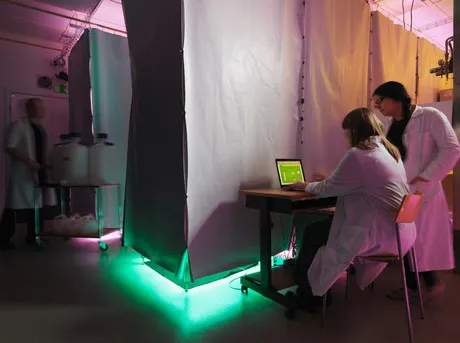Started in 2006 by two plant scientists, Heliospectra's vision has been to design a lighting system that takes into account plant signals. The idea is to create a biofeedback loop in which plant signals control the lighting system. By closely monitoring signals given off by plants, Heliospectra wants to develop software that takes those signals and plugs them into the light source. The lights will then automatically change as the plant changes and requires different light levels. While the complete biofeedback system is not yet commercially ready, Heliospectra has come up with many useful innovations on the way to their goal.

A couple of the innovations created along the way are their system management software and online controller. Heliospectra recently launched their System Assistant, which is a standalone software that enables users to manage all the lights in the network. Alongside the launch of the management software is the upgrade to their online controller. The controller comes standard on all Heliospectra products. This controller allows users to remotely configure the light quality, scheduling, network access, and other “smart” features for plant lighting. For example, future modifications will include the ability to record and save lighting recipes. A nice thing for users is that there is no need for a dedicated computer to run the system since Heliospectra has built this intelligence into each light.

Because the goal is to build a biofeedback system, Christopher Steele, Vice President of Sales and Marketing for Heliospectra, noted that the current light system, the L4A Series 10, is designed with a top-down approach.
“In order to conduct the research necessary to create the biofeedback system we want, we had to build our own LED lights since nothing on the market had the flexibility and control we needed,” explained Steele. “Some people saw the systems we made and wanted to buy it, so we went from developing a particular lighting application to also selling the lighting hardware.” While they continue toward their vision in their research lab in Sweden, they now also sell sophisticated lighting systems.
Heliospectra’s current lighting systems have seven different wavelengths. Each wavelength can be individually controlled with Heliospectra's software, and the result is a highly customizable system. “If you're working with only a few wavelengths, it can be a bit limiting when trying to develop optimal light conditions for plant growth” Said Steele. “By having seven different wavelengths, it increases the opportunities to tweak light conditions in more ways to produce a better crop, find the correct light recipe, or conduct unique plant studies. This type of system not only has the potential to significantly lower energy use in the greenhouse industry but can also improve crop quality to the point which it will allow crops to be economically grown all year round.” While the system does cause shadows, Steele noted that, in that respect, they're not much different from high pressure sodium lights.

The flexibility and high-end nature of the system make it ideal for plant scientists, but Steele also believes there's a market for the system among commercial growers of high-value crops.
“Scientists love it because, whether in a closed environment or in a greenhouse setting, there isn't anything quite as flexible,” said Steele. “But we've also installed our systems with a large herb producer, so, for high-value crops, a good return on investment can be achieved.”
Heliospectra’s vision is to create a complete system including biofeedback where the plants are in essence controlling the light system. This is based on decades of research in plant fluorescence and biofeedback and protected by their patent portfolio. As part of the research being conducted at Heliospectra, they are collaborating with the Signals and Feedback Department at Chalmers University of Technology which is sponsored by a research grant from the Swedish Mistra Foundation.
 For more information:
For more information:Heliospectra AB
Christopher Steele
csteele@heliospectra.com
www.heliospectra.com
